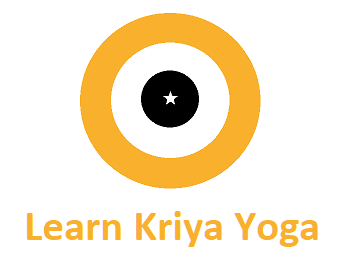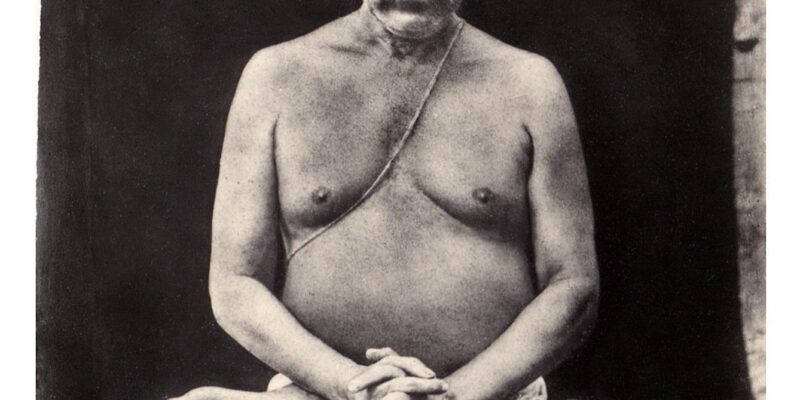108 Kriya Yoga Advice by Lahiri Mahasaya 1. Kriya is Truth, and the rest is false. 2. Practicing Kriya is…
Babaji Yoga Sutras
Source – Sanskrit Classics
Chapter 1 – The Doctrine – Tattvam
Ata Atma Jigyasa.
Now, the Self inquiry.
Swarupe abasthanam Atmadarsanam.
For one to become established in one’s true form [nature] is called self realization.
Sarbajna Nityang Purnamadyamanantam Atma.
The Omniscient, the permanent, the complete, that without beginning and without end, is the Self.
Tasya prakasak Pranab.
The beginning of manifestation is the Word, Pranaba, that is Om, Aum or Amen or Amin.
Pranaba sabda eba pantha.
The path is the sound of Om, Aum or Amen.
Jagatsristi maya Iswarasya tasya heturabidya.
The world is created by God through illusion, or darkness, the cause of which is ignorance.
Chittavritti heya hetu.
The cause of sufferings and sorrows are the desires of the heart.
Sarbagya Purusabisesa Atma, Tasyabhasa Kutastha.
The all-pervading seed of Omniscience is the absolute Self. Its reflection is Kutastha, the Holy Ghost.
Bisesa-abisesa lingamatralingani gunaparbani.
The organ, the particles, the attributes and the greatness: these are the four stages of neuter quality.
Sthulasarirasyangani chaturbingasati tattvani.
There are twenty-four elements in the gross material body.
Tibra sadhanaprabhabadnubhabasanna.
By the determined practice of Kriya, Realization is very near.
Tada sarbani padmani bhidyante granthoyapi cha.
When at the grace of Guru, or at the grace of the Self, the Kundalini awakens, or opens the mouth of the spinal cord, then all the padmas and granthis (lotuses and chakras) are crossed through.
Saptadha prantabhumi prajna.
The knowledge has seven stages.
Bhurbhubasyamaharjanastapa satyeti sapta lokas.
There are seven lokas, or spheres.
Tat sanjamat saptabhumibodha.
When concentrated there, the Yogi understands the seven stages.
Atmapranidhanat.
By surrendering the Self, one can realize.
Tadatmano darsanantata nijbodgarupam.
Thereafter, seeing the Self, the yogi realizes the true Self.
Chapter 2 – The Goal – Laksham
Athato mukti jignasa.
Now the question of Liberation.
Mukti puruse abasthanam
Liberation is to live in the real nature of Purusa, or Self.
Abidya amsita raga dwesa avinibesa klesa.
Abidya (ignorance); asmita (egoism); rag (attachment); dwesa (the natural tendency one feels to avert that which creates displeasure) and avinibesa (attachment to the body). These are the sufferings.
Satye asatya asatye Satya bodhoabidya.
Truth understood as untruth and untruth as truth is called abidya, ignorance.
Purusa prakriti ekatma bodhaganam asmita.
When the pure Self is thought to be one with prakriti, nature, this is asmita.
Sukhe askti ragah.
The attachment to liking things is rag.
Dukhe anasakti dwesah.
Dwesa is the repulsion of things disliked.
Janma janmantar abadhi prakrityasakti avinibesa.
The natural tendency of attachment to the material body because of previous tendency is avinibesa.
Klesha mulam karma tadbipako jatyayurbhoga.
Man suffers in different ways in life because of five egoistic tendencies.
Sarba klesha avabat paramartha siddhihi.
When all sufferings are absolutely finished, highest realization takes place.
Sarba dukhang nibrittihiatmanonityattwa upalabdhi satah.
When all sorrows and sufferings are absent absolutely, the Self’s eternity is realized.
Aham swa upalabdhihi lakshyam.
The Goal is to realize the Self.
Chapter 3 – The Discipline – Sadhanam
Tapa swadhyaya Atma pranidhanani Kriyayogaha.
Patience, self-study and self-surrender are called Kriya Yoga.
Samadhi vabanartha klesatanu karanarthascha.
To have Realization and to remove the obstructions to Realization, a discipline is necessary.
Dhyana heyastada chittabrityaya.
Meditation purifies the desires of the heart.
Yoganusthanad sudhikshyaye ganang prakaste.
After purification by yoga practice, pure Knowledge of the Self is revealed.
Kriya sadhana pravabat virjalav.
With the practice of Kriyas given by the Gurudev, the yogi gets all energy from within.
Sadguru sang atmabat karaniya visbadbarjaniya durjana.
Prabese nirgame vayor gurulakshang bilokayet.
Always associate with Guru as Self; keep away from association with bad elements.
Watch the respiration as the Guru has instructed.
Ahingsa satyasteya brahmacharya aparigraha yama.
Non-violence, truthfulness, non-stealing, celibacy and not taking help from others: these five are called yama.
Socha santoshah sadguru upadesa palanadaya niyama.
Purity, contentment and following the instructions of Guru is niyama.
Tato asudhi kshaya.
Then the impurities are destroyed.
Sthirasukhamasanam.
Continuing a long time to sit easily in any posture is Asana.
Swasa praswasyorgatibichheda kebalakumvaka.
When the continuation of breathing is naturally stopped, Kebala Kumbhaka is held.
Tata pranayam swatah.
When Kebala Kumbhaka is held, Pranayam, also, always is held.
Indriyanam antar mukhatam pratyahara.
Making the sense organs inward is pratyahara.
Atma prasade sati sarbavabodaya dhriti.
At the blessing of the Self, divine qualities are revealed in the heart of the sadhaka.
Ragopahati tata chittavrittvi nirodhat dhyanam.
Meditation is when attachment has vanished and the desires of the heart have ceased absolutely.
Tata bibhutyabirbyaba.
Then the yogic powers come to the yogi.
Tadebarthamatra nirvasang swarup sunyemib samadhi.
Samadhi is when all external things are dissolved during meditation revealing only meaning.
Tata sangjamat atmanuvabah.
Concentrating there, the yogi realizes the Self.
Tatra sadguru lav dibyatvyam prakasate.
Tada satyanuvabat mukta sannyasi.
There the sadhaka finds the true Guru, Divinity is revealed, Truth is realized, and the yogi becomes Mukta Sanyasi, a free Yogi.
Atma darsanat swarup pratistha kaibalyam.
The yogi realises the Self to be established in its True Nature at the state called Kaivalyam.
Chapter 4 – The Revelation – Anubhavah
Sadhakasya chaturbidha abastha.
Sadhaka, or the seeker, the Kriyanwit, has four stages.
Sthula sarir sudhaye tamoguna kshayate tata mridusadhaka-bastha.
The removal of gross material sense and purification from negative qualities marks the stage of the craving Sadhaka.
Sukshma sarir sudhaye rajoguna nasayate tata sadhakabastha.
When the subtle body is finished and the positive quality purified, that is the realizing stage.
Tadeb vabet virjaban mantrah.
Then Mantra becomes full of life.
Sattva gunasya sudhaye sadhakasya siddha abstha.
By the influence of Kriya practice given by the Sadguru, the cosmic body is transcended, the divine qualities are purified and Sadhaka is at the realized state.
Dehatraya sudhistata mahakaransarir kshaye sadhakasya muktabastha.
After the purification of three bodies, the great cosmic body is purified, and Sadhaka is established in Realization to become Free.
Tata gansariram.
Now the Yogi receives the body of Knowledge.
Sa eba Jivanmukta Sannyasi.
He is Jivanmukta Sanyasi.
Gunatikrame darsanat atmana kaibalyam.
Going beyond the three qualities to see the Self is the state of Kaivalya.

